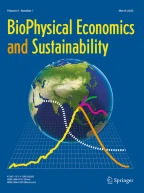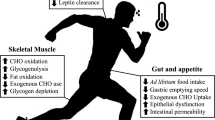Human-Powered Electricity Generation as a Renewable Resource

Energy and human's ability to transform energy into useful work has been the cornerstone of the development of civilizations. Throughout the majority of human existence, we relied solely on metabolic energy derived from plants and animals. In only a few centuries, society has almost completely transformed, from relying on somatic energy to become almost entirely dependent on fossil fuels. The combustion of hydrocarbon energy resources has had detrimental impacts on our environment, which has initiated a push for clean energy. This research study explores the metabolic energy output of humans, specifically within an exercise facility, to evaluate the feasibility of electrical power to be sustained from human-powered energy. Two rowing workouts were evaluated and then compared to solar photovoltaic as an alternative renewable energy. The result of the study demonstrates that 40 members of various physical abilities can collaboratively provide 3–5% of the gym’s average daily electricity demand if converted at an efficiency of 64%. The cost of converting the rowing machines resulted in a 33-year payback period.
This is a preview of subscription content, log in via an institution to check access.
Access this article
Subscribe and save
Springer+ Basic
€32.70 /Month
- Get 10 units per month
- Download Article/Chapter or eBook
- 1 Unit = 1 Article or 1 Chapter
- Cancel anytime
Buy Now
Price includes VAT (France)
Instant access to the full article PDF.
Rent this article via DeepDyve
Similar content being viewed by others

Nutritional Considerations in Exercise-Based Heat Acclimation: A Narrative Review
Article 31 August 2024

A trade-off between cognitive and physical performance, with relative preservation of brain function
Article Open access 20 October 2017

Effects of prolonged multidimensional fitness training with exergames on the physical exertion levels of older adults
Article 29 July 2019
Notes
Endosomatic : within or part of the biological body. Endosomatic energy is the metabolic transformation of food energy into muscle energy occurring within the human body (Sterrer 1993).
Exosomatic: external to the human body. Exosomatic energy is generated outside of the human body, such as burning coal (Sterrer 1993).
BMI is a person’s mass in kilograms (kg) divided by the square of their height (m 2 ). Obesity is a BMI of 30 or above for either sex (Flegal et al. 2012).
Minor appliances include computer, television, cable box, clock, microwave, cell phone charger, stereo, speakers, and coffee maker.
References
- Bardi U (2016) What future for the anthropocene? A biophysical interpretation. Biophys Econ Resour Qual 1:2. https://doi.org/10.1007/s41247-016-0002-zArticleGoogle Scholar
- Bartlett C (2014) The design of the Great Pyramid of Khufu. Nexus Netw J 16(2):299–311. https://doi.org/10.1007/s00004-014-0193-9ArticleMATHGoogle Scholar
- CA Energy Office (2016) Renewables portfolio standard (RPS) regulations for POUs. 2016. http://www.energy.ca.gov/portfolio/
- Census (2015) U.S. Census Quick Facts, United States Census Bureau. http://www.census.gov/quickfacts/table/PST045215/45
- Concept2 (2016) Training Muscles Used, Concept2 Rowing Machines. http://www.concept2.com/indoor-rowers/training/muscles-used
- Customer Generation and Solar Energy FAQ (2015) [Commercial]. https://www.duke-energy.com/our-company/environment/renewable-energy/solar-energy/sc-solar-energy-programs/solar-rebates
- Davis SC, Williams SE, Boundy RG (2016) Transportation energy data book: Edition 35 (No. ORNL/TM-2016/470). Oak Ridge National Laboratory (ORNL), Oak Ridge
- de Almeida A, Fonseca P, Schlomann B, Feilberg N (2011) Characterization of the household electricity consumption in the EU, potential energy savings and specific policy recommendations. Energy Build 43(8):1884–1894. https://doi.org/10.1016/j.enbuild.2011.03.027ArticleGoogle Scholar
- Donelan AJM et al (2015) Biomechanical energy harvesting: electricity generating during walking with minimal user effort. Science 319(5864):807–810 ArticleGoogle Scholar
- EIA (2013) International energy statistics: total primary energy consumption, U.S. Energy Information Agency, Washington, DC Google Scholar
- EIA (2016) South Carolina state energy profile industrial, U.S. Energy Information Administration, Washington, DC Google Scholar
- Flegal KM, Carroll MD, Kit BK, Ogden CL (2012) Prevalence of obesity and trends in the distribution of body mass index among US adults, 1999–2010. JAMA 307(5):491–497 ArticleGoogle Scholar
- Fonte GCA (2007) Building the great pyramid in a year: an engineer’s report. Algora Publishing, New York (ProQuest ebrary. Web. 12 June 2015) Google Scholar
- Gifford R, Millington R (1975) Energetics of food production with special emphasis on the Australian situation. CSIRO Bull 288:1–29 Google Scholar
- Granstrom J, Feenstra J, Sodano H, Farinholt K (2007) Energy harvesting from a backpack instrumented with piezoelectric shoulder straps. Smart Mater Struct 16(5):1810–1820 ArticleGoogle Scholar
- Gustavsson J, Cederberg C, Sonesson U, Van Otterdijk R, Meybeck A (2011) Global food losses and food waste. FAO, Rome, pp 1–38 Google Scholar
- Haji MN, Lau K, Agogino AM (2010) Harnessing human power for alternative energy in fitness facilities: a case study. Annual Conference of the Association for Energy Sustainability, Philadelphia
- Kuang SY et al (2015) Two-dimensional rotary triboelectric nanogenerator as a portable and wearable power source for electronics. IEEE Pervasive Comput 13:10–16 Google Scholar
- MacKay D (2008) Sustainable energy-without the hot air. UIT, Cambridge Google Scholar
- Mattick CS, Williams E, Allenby BR (2009) Energy and civilization: a history of energy production and consumption in a global cultural, technological and economic context. In 2009 IEEE international symposium on sustainable systems and technology, Phoenix, pp. 1–6. https://doi.org/10.1109/ISSST.2009.5156766
- McArdle WD (1986) Exercise physiology, 2nd edn. Lea & Febigier, Philadelphia Google Scholar
- Nersesian RL (2010) Energy for the 21st century: a comprehensive guide to conventional and alternative sources. M.E. Sharpe, Armonk Google Scholar
- NREL (2016) System Advisor Model Version 2016.3.14, National Renewable Energy Laboratory, Golden. Accessed 31 Oct 2016. https://sam.nrel.gov/content/downloads
- Sanjay SD (2014) Harvesting electrical energy from a stationary bike: an experimental approach, Thesis: Massey University
- S.C. Code Ann. § 58-39-110 et seq. (2013–2014) Bill 1189 Text of Previous Version. South Carolina Legislature Online. http://www.scstatehouse.gov/sess120_2013-2014/prever/1189_20140521.htm. Accessed 17 Aug 2015
- Shephard RJ (2010) Science and medicine of rowing: a review science and medicine of rowing : a review. Sports Sci https://doi.org/10.1080/026404198366416
- Smil V (2004) World history and energy. Encycl Energy 6:549–561 Google Scholar
- Starner T (1996) Human-powered wearable computing. IBM Syst J 35(3.4):618–629 ArticleGoogle Scholar
- State of Obesity (2016) The State of Obesity in South Carolina, State of Obesity, Trust for America’s Health, Robert Wood Johnson Foundation. http://stateofobesity.org/states/sc/
- Statista (2014) Facts on health and fitness clubs, statista: the statistics portal. https://www.statista.com/topics/1141/health-and-fitness-clubs/
- Sterrer W (1993) Human economics: a non-human perspective. Ecol Econ 7(3):183–202 ArticleGoogle Scholar
- Tackett N (2008) The great wall and conceptualizations of the border under the Northern Song. J Song-Yuan Stud 38:99–138. https://doi.org/10.1353/sys.0.0032Google Scholar
- Toma Č, Kamnik R (2011) The measurement setup for real-time biomechanical analysis of rowing on an ergometer. Measurement 44:1819–1827 ArticleGoogle Scholar
Acknowledgements
This research was supported by the Department of Environmental Engineering and Earth Sciences (EEES) at Clemson University. We would also like to thank Andrew and Krissy Simmons for their cooperation and for allowing me to analyze their facility, Green City Crossfit. The utility data that they provided were a vital element of this research and is greatly appreciated.
Author information
Authors and Affiliations
- Environmental Engineering and Earth Sciences, Clemson University, Clemson, USA Michael Carbajales-Dale & Benjamin Douglass
- Michael Carbajales-Dale




